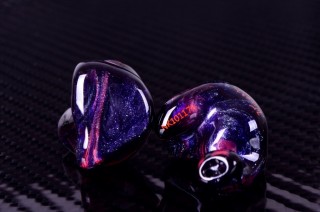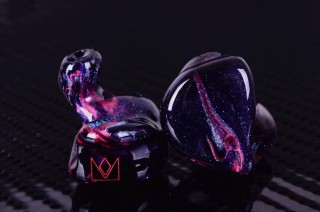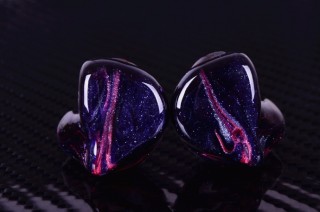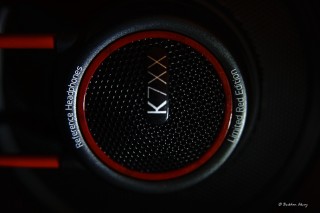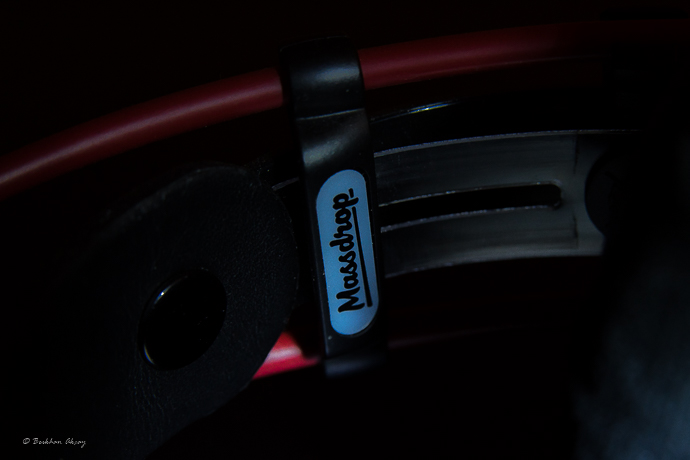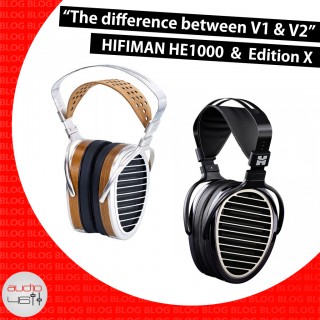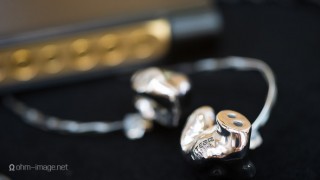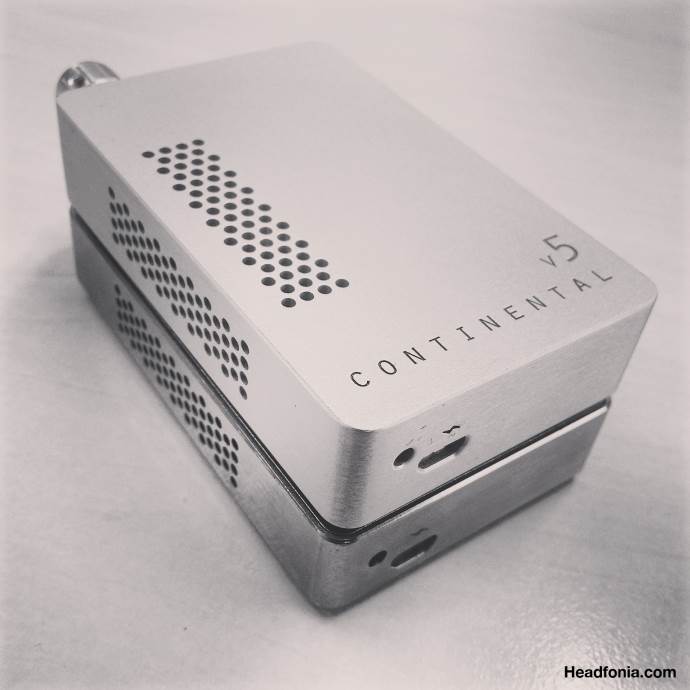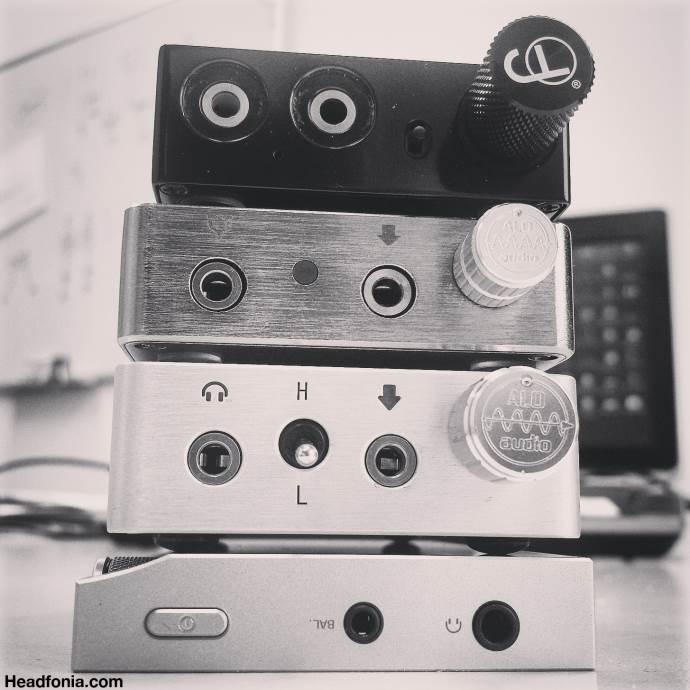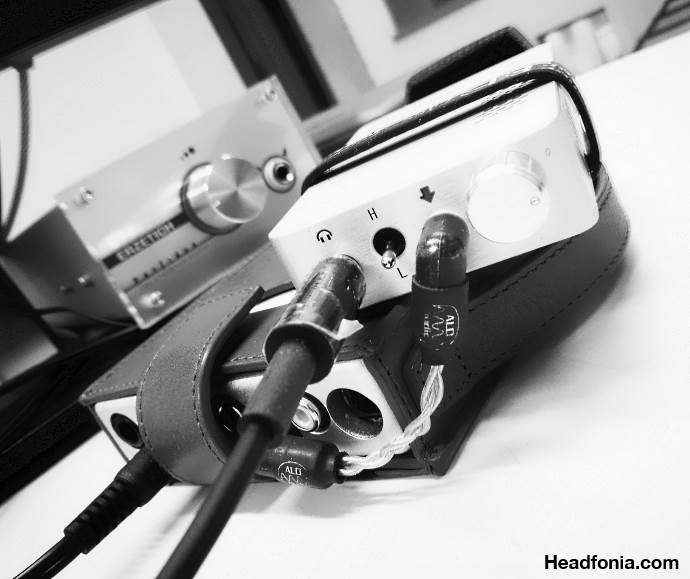We’ll admit to suffering tiny pangs of jealousy whenever a really cool new headphone amp like the Chord Mojo saunters its way across our review desk.
After all, we invented the first portable USB amp/DAC way back in the day (look here for our archive of classic HeadRoom Audio products) and we still know a thing or two about designing killer high-performance headphone amplifiers – natch, our new 2016 HeadRoom Audio Standard Amp.
But despite our gills perhaps going a bit green around the edges, we are genuinely sincerely stoked when a superb new product appears like the Chord Electronics Mojo amp/DAC that pushes the whole game forward a bit.
The Mojo is chock full of cool new advancements and offers excellent audio performance we can recommend to a broad swath of music-loving listener needing the best portable sound possible from the smallest size box. The Chord Mojo amp/DAC unit helps bring to life true high-resolution audiophile smartphone/Mac/PC listening with any good headphone in your arsenal.
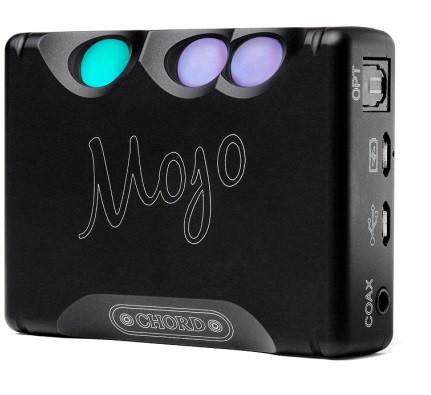
The folks over at England’s Chord Electronics have been in the business for a very long time designing and manufacturing high-end audiophile headphone amps like the awesome Chord Hugo amp/DAC, a widely acclaimed, universally revered reference amp topping out around $5,000 USD for the top-of-the-line Chord Hugo TT model.
Chord Electronics recently created another enormous splash on this side of the pond with their introduction of the much smaller portable Chord Mojo amp/DAC, which actually uses the superb Hugo platform as a jumping-off point for the Mojo’s internal topology.
So among the Mojo’s biggest selling points, then, becomes its fairly accessible $599 price given the supremely high-end audio DNA pedigree and upscale digital audio performance capabilities stuffed under its beautifully curved little bonnet.
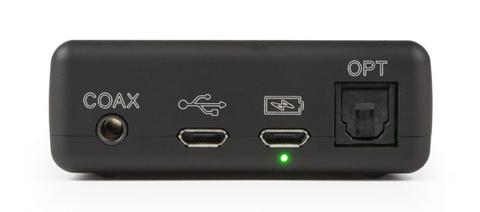
The Chord Mojo’s attractive matte-grey chassis is precision machined from one single solid block of extruded aircraft grade aluminum. The amp feels like a dense river-smoothed stone held in the palm of your hand – that is, if river stones had colorful roller ball lights embedded in the exterior. The glowing ball lights change hues to serve as input file status indicators and as volume / power controllers that illuminate when operational.
Designed for use with either smartphones or computers, the Chord Mojo handles almost any caliber of digital audio input from 44kHz and 48kHz all the way up to 768kHz / 32-bit and even quad DSD 256-encoded files, with differently colored lights glowing under the power balls to indicate the digital file rate. The colorful Mojo design nicely stands out in today’s staid grey-gris world of headphone amplification.
Indeed, the Chord Electronics Mojo has a very distinctive look & feel that seems exceptionally well-built – rather like a rugged British Challenger tank – along with an elegant sense of curve and shape, like a classic 1970s Aston-Martin roadster. The Mojo unites the best of those disparate architectural sensibilities and couples sheer power with lithe musicality housed in a tough, cool chassis. No doubt, its a wholly unique aesthetic in the world of high-end mobile audio. Nice work, Chord Electronics!
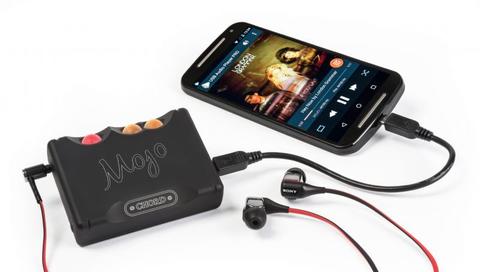
As mentioned, digital audio inputs are ubiquitous on the Mojo – USB, optical, and mini co-axial – with two 3.5 mm headphone outputs located on the opposite panel so you can share the tunes. The Chord Mojo TOSLink optical input handles 44.1KHz-192KHz, PCM and DSD64 in DoP formats while the micro-USB input handles 44KHz-768KHz PCM and DSD64, DSD128, and DSD256 in DoP format. The 3.5mm COAX SPDIF is capable of playing 44.1KHz-384Khz PCM and DSD64, DSD128 in DoP format. It’s 100% driverless on Mac, Android, and Linux systems but note that Windows users will need to perform a one-time download of the proper audio drivers from the Chord Electronics website to make your PC fully compatible with the Mojo.
The Mojo will also work with all iPhones/iPads that have an Apple Lightning connection with an Apple USB camera connection kit. To use Mojo with an Android device, you’ll need an ‘on the go’ [OTG] cable for connectivity. The only cable that comes in the box with the Mojo is a small USB charger connector. To add to its flexibility of application, the Mojo can also be employed as a DAC-only ‘stand alone’ device by pressing a pre-ordained button array during start-up.
CHORD MOJO TAKES ON THE OPPO HA-2

When we compare the Mojo to the popular Oppo HA-2 Amp/DAC unit, the sleek form and intuitive operative function of the terrifically slim HA-2 beats the larger, somewhat clunkier weight and size of the bigger Mojo. The Oppo also costs only about ½ the price of the Chord Mojo and its more iPhone-like dimensions may make it an easier travel partner for smartphone listening. It’s almost impossible to pair a Mojo and a smartphone together in a slim-profile manner due to the thicker construction of the Mojo unit.
However, if the smallest possible travel size is second on your list to best acoustic performance, the Chord Mojo has it all over the HA-2 in overall sound quality with both high impedance headphones and highly sensitive multiple-driver in-ears. Especially with highly revealing balanced armature IEMs like a custom UE11Pro or the universal-fit Shure SE846, the Mojo’s deep black background remains dead silent with zero hiss evident in the presentation, even at high listening levels. When you need to plug in your big hard-to-drive full-size cans, the Oppo can struggle a bit and get slightly grainy around the edges at high volume while the Mojo sounds clean, effortless and potent even using difficult power-hungry headphones like the Sennheiser HD800S or the Audeze LCD-3 planar magnetic headphones.
So in our estimation, the Mojo’s excellent multiple-duty reference performance exceeds that of the well-priced Oppo. And look Ma, no gain switch! The Chord Mojo automatically senses the load and adapts itself instantaneously in response to the impedance and sensitivity of your headphones of choice, making a gain switch superfluous.
MOJO VERSUS DRAGONFLY
Versus the newest Audioquest Dragonfly Red amp/DAC, the incremental sonic differences are again all about sound quality detail with the beefy Chord Mojo plainly besting the dynamic reach, openness and extension of the tiny Dragonfly USB-stick unit.
With in-ear monitors in particular, the significantly lower noise floor of the Mojo made for a much more refined, dynamic sound and a more overall pleasing listening experience. To be fair, the nicely inexpensive and radically tiny Dragonfly certainly takes the cake in overall portability and ease of use; its simple ‘plug & play’ design with any computer is a no-brainer to use even for the completely non-techie person. If you’re using audiophile headphones, the Dragonfly Red clearly improves the overall musicality, detail and dynamic range compared to connecting your cans directly to the laptop or PC headphone jack. Both Apple and Android smartphone users can also employ cable adapters to use with the Dragonfly amp/DAC for listening on the go.
CONCLUSIONS
For serious audiophiles not necessarily constrained by size/weight considerations and for those listeners who want the best portable sound possible – in a unit that can effectively double as a home or office headphone amp and/or DAC system – the Chord Electronics Mojo fits the bill better than any other product of its type on the market today. Its superior high-resolution feature set and connectivity to most modern smartphones (with the appropriate interconnects) presents very strong sound quality upgrade potential for a wide array of sources.
The Mojo really has a broad-based range of audio uses and it genuinely excels at them all. True, it does not have the slimmest dimensions and the traveling carry weight ergonomics are slightly larger than would be ideal ( e.g, the Oppo HA-2), but to our ears the Chord Mojo may just be the best-performing ‘under $600’ portable amp/DAC unit on the market today. Cheers to Chord Electronics!


